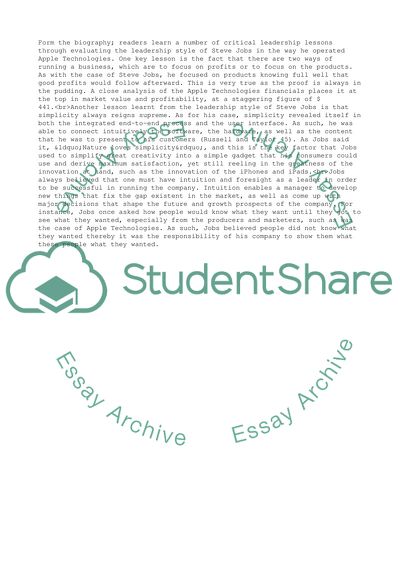Cite this document
(“Leadership Style of Steve Jobs Book Report/Review - 1”, n.d.)
Leadership Style of Steve Jobs Book Report/Review - 1. Retrieved from https://studentshare.org/management/1847506-book-report
Leadership Style of Steve Jobs Book Report/Review - 1. Retrieved from https://studentshare.org/management/1847506-book-report
(Leadership Style of Steve Jobs Book Report/Review - 1)
Leadership Style of Steve Jobs Book Report/Review - 1. https://studentshare.org/management/1847506-book-report.
Leadership Style of Steve Jobs Book Report/Review - 1. https://studentshare.org/management/1847506-book-report.
“Leadership Style of Steve Jobs Book Report/Review - 1”, n.d. https://studentshare.org/management/1847506-book-report.


